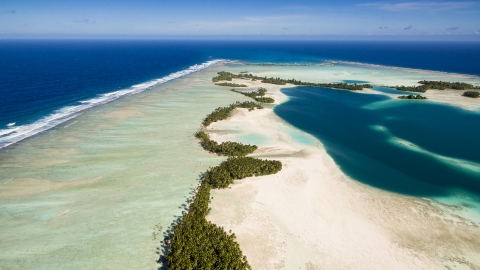Visit Us
Public access to Palmyra Atoll is self-limiting due to the very high expense of traveling to such a remote destination. The Nature Conservancy owns and operates the only airplane runway on Palmyra and by boat, it's a five to seven day sailing trip from Honolulu. There are several ways to gain access to the refuge, though certain rules apply.
Location and Contact Information
About Us
Palmyra Atoll National Wildlife Refuge was established on January 18, 2001, by the Secretary of the Interior and includes submerged lands and associated waters out to 12 nautical miles from the atoll. It is approximately 956 nautical miles south of Honolulu, about halfway between Hawaiʻi and America Samoa, and consists of a circular string of about 26 islets nestled among several lagoons and encircled by 15,000 acres of shallow turquoise reefs and deep blue submerged reefs. It is the northernmost atoll in the Line Islands in the equatorial Pacific. On January 6, 2009, the Pacific Remote Islands Marine National Monument was established, which includes Palmyra Atoll National Wildlife Refuge and the surrounding ocean out to 50 nautical miles within its boundaries.
What We Do
The mission of the National Wildlife Refuge System is to administer a national network of lands and waters for the conservation, management and, where appropriate, restoration of the fish, wildlife and plant resources and their habitats within the United States for the benefit of present and future generations of Americans.
Our Species
Palmyra Atoll National Wildlife Refuge is home to a variety of wildlife. The wildlife found in and around the island is rich with diversity ranging from a variety of birds, marine mammals, various species of reptiles, invertebrates, marine life, and flora.
Our Library
Here you will find library collections containing a variety of U.S. Fish and Wildlife Service publications, reports, fact sheets, media and documents along with other reference material.
Projects and Research
From invasive species invasive species
An invasive species is any plant or animal that has spread or been introduced into a new area where they are, or could, cause harm to the environment, economy, or human, animal, or plant health. Their unwelcome presence can destroy ecosystems and cost millions of dollars.
Learn more about invasive species removal to protecting endangered species, find out what kind of projects and initiatives we're conducting on Palmyra Atoll National Wildlife Refuge.








